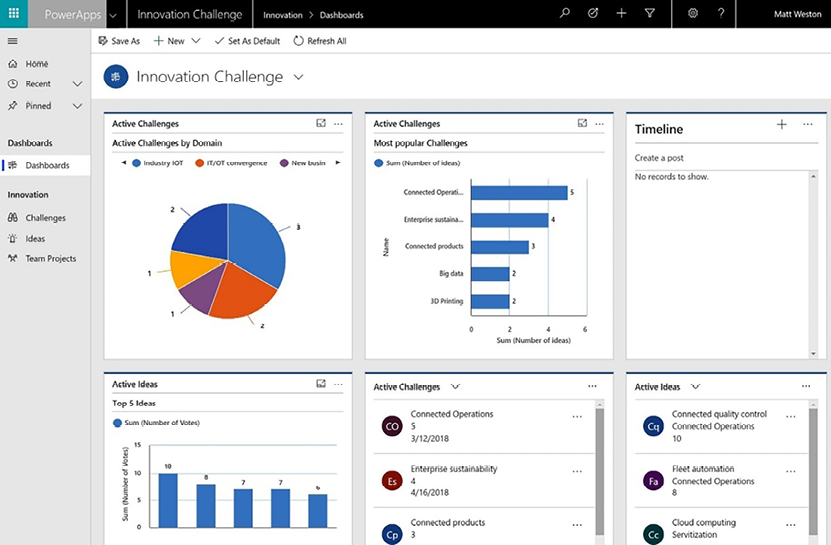Understanding the types of apps
As app developers, we now have multiple ways in which we can author our apps. The choice of our development environment will determine how we build, where we deploy to, the data sources that we can connect to, and ultimately how our users access our apps.
All of the different ways of authoring the apps have their own use cases, and we will explore them throughout the book:
- Canvas apps
- Model-driven apps
- SharePoint List Form apps
- Microsoft Teams Power Apps (Dataverse for Teams)
Understanding what the different types of app are will help you to make the correct decision when you are developing. Let’s start by looking at canvas apps.
Canvas apps
Canvas apps are the mainstay of apps that are developed using Power Apps. They allow you to develop lightweight apps that are specifically intended for mobile devices, as well as apps that are being developed for tablet and desktop use:

Figure 1.6: An example of a canvas app that has been generated from the Site inspection template
Creating canvas apps is simple – it follows the drag-and-drop methodology so that you can add components and position them onto the page, which gives you complete control over the layout. Combine this with the ability to create logic by using Excel-like functions and expressions, and you now have the ability to interact with data in a way that allows Power Apps developers of all skill levels to build functional apps.
Canvas apps are extremely flexible in terms of the data sources they can connect to, being able to connect to over 450 different services to consume and display data, resulting in an extremely versatile and flexible app. We will take a look at them in greater detail in Chapter 2, Creating Your First Canvas Power App.
Model-driven apps
Model-driven apps differ slightly from canvas apps in terms of the development approach. With canvas apps being user experience-driven, model-driven apps are driven by the underlying data, as shown in the following screenshot. In contrast to canvas apps, the layouts in a model-driven app are much more controlled, with grid-based layouts being used to show the content from the underlying Dataverse database. We still have the ability to create an app in a short amount of time, without writing code, but much more of the emphasis is put on the database structure:

Figure 1.7: An example model-driven app
Model-driven apps share the same principles as canvas apps in that they allow you to create powerful apps without resorting to code; however, the thought process is very different and starts with the underlying data. From a personal development point of view, model-driven apps have been used a lot more as back-office solutions, where the user doesn’t need to take advantage of the richer set of components available to a canvas app. We will investigate model-driven apps in more detail in Chapter 16, Creating Model-Driven Apps.
SharePoint List Form apps
SharePoint List Form apps are designed to help with the deep integration with SharePoint Online, where the standard out-of-the-box list forms can be overridden by a canvas app. They are created using the same editing experience as standard canvas apps, but are designed to react to the standard SharePoint user events such as creating new items, editing, and viewing. We will explore them in Chapter 3, Creating Apps in SharePoint.
Microsoft Teams Power Apps (Dataverse for Teams)
Microsoft Teams and Power Apps integration has been hugely improved, and we will investigate the relationship in Chapter 19, Dataverse. Microsoft Teams now has the ability to author and interact with Power Apps directly within the Microsoft Teams interface, using Dataverse for Teams.
Creating the app in Teams, however, does mean that it must be accessed through the Microsoft Teams interface, rather than through the Power Apps app, but it allows us to utilize the full power of the Power Platform within our collaboration environment.
The key aspects of this book will focus on the creation of canvas apps, but the techniques that we put into practice will provide you with the skills necessary to create apps in each of the other environments.

